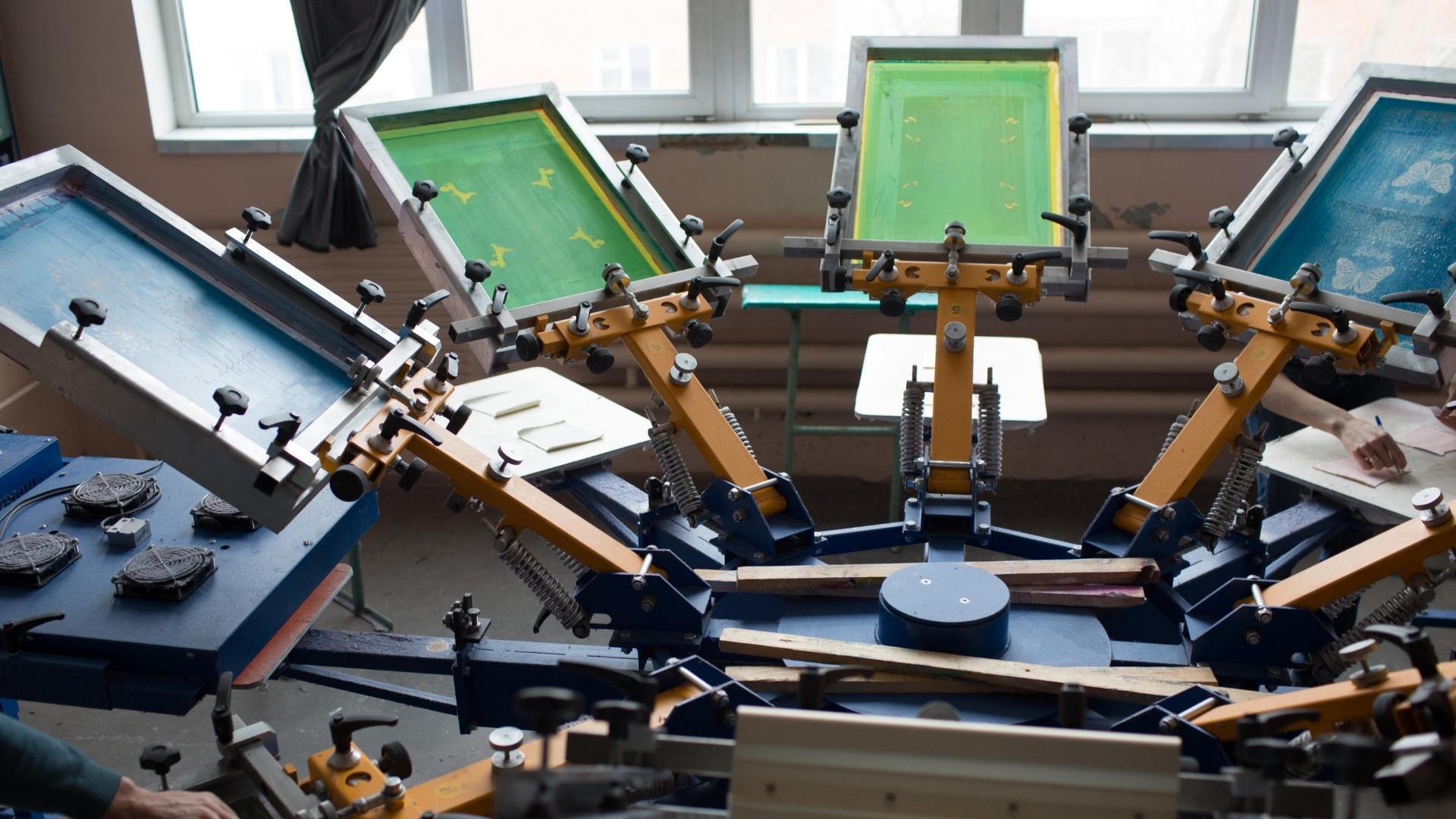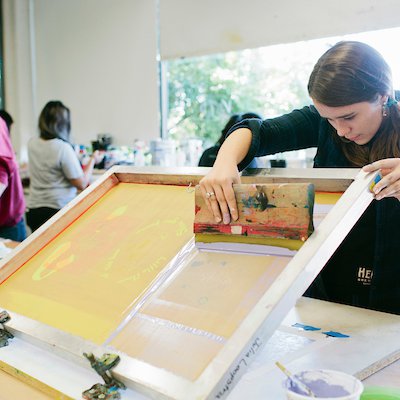The Crucial Guide to Comprehending Screen Printing and Its Versatile Uses
Screen printing has a rich history that goes back to old times, developing right into a sophisticated method used throughout different industries today. This guide checks out the intricacies of the screen printing process, detailing its applications in home, advertising and marketing, and fashion decoration - 10:9 Design contact. Recognizing these fundamentals can open up innovative potential for both business and creative tasks. The adhering to areas will expose important ideas and strategies to enhance one's screen printing ventures
The History of Screen Printing
Although screen printing has origins that map back centuries, its development shows the technological and creative advancements of various cultures. Coming from ancient China, the technique was originally utilized for enhancing textiles and later spread to Japan, where it came to be important to Ukiyo-e woodblock printing. The technique changed to Europe in the 18th century, where it obtained appeal among artisans and industrial printers. The creation of picture solution in the 20th century transformed screen printing, permitting even more elaborate designs and better performance. Artists like Andy Warhol further propelled its popularity, utilizing the tool to produce iconic works that combined commercialism and great art. By the late 20th century, screen printing had developed itself as a functional strategy, used in vogue, marketing, and art. Today, it continues to develop, integrating digital modern technology and broadening its applications throughout different industries.
The Screen Printing Refine Explained
Screen printing transforms creative visions into concrete styles via a collection of exact actions. An image is produced and after that moved onto a screen, typically made of fine mesh fabric stretched over a structure. A light-sensitive emulsion is applied to the screen, which is exposed to light, setting in areas not covered by the picture. After washing out the unhardened solution, a pattern is created.
Next, the screen is placed over the substrate, whether it be textile, paper, or one more material. Ink is after that pressed through the open locations of the pattern using a squeegee, transferring the design onto the substrate listed below. This procedure can be duplicated for several shades, requiring different screens for every shade. The printed item is healed making use of heat to ensure the ink adheres effectively, resulting in a durable, lively style prepared for usage.
Types of Screen Printing Techniques

Furthermore, specialized strategies, such as discharge screen printing, remove dye from the fabric to produce softer prints, while aluminum foil screen printing uses metal foil to accomplish a shiny surface (10:9 Design Abilene). Each method offers distinct attributes, satisfying different imaginative needs and production ranges, ultimately increasing the possibilities within the screen printing domain name
Applications of Screen Printing in Various Industries

In addition, the signage and advertising and marketing fields utilize screen printing for creating appealing display screens and banners. This technique allows for strong colors and complex layouts that record interest. In electronic devices, screen printing is employed for using conductive inks to motherboard, crucial for component connections. Moreover, the home design market embraces screen printing to generate distinct designs on fabrics and wall art. Generally, screen printing acts as a crucial tool throughout varied fields, enhancing items with customized and aesthetically enticing graphics.
Tips for Effective Screen Printing Projects
While undertaking a screen printing task, mindful attention to information can substantially enhance the final outcome. First, selecting premium materials is essential; this consists of the screen, inks, and substratums. Using appropriate mesh counts can impact ink deposition and information resolution. Preparation is just as essential; comprehensive cleaning of displays and proper exposure times ensure crisp prints.
Next off, exact enrollment is critical for multi-color prints. Making use of positioning devices can aid accomplish exact layering. Furthermore, testing prints on scrap materials prior to production assists recognize possible problems without losing resources.

Regularly Asked Questions
What Materials Are Finest for Screen Printing on Fabric?
Cotton and polyester blends are perfect for screen printing on textile because of their sturdiness and ink absorption. In addition, specialty materials like silk or canvas can generate distinct textures and coatings, enhancing the general design top quality.
How Do I Clean and Maintain Screen Printing Devices?
To preserve and clean screen printing tools, one ought to frequently wash screens with ideal solvents, check squeegees for wear, oil relocating components, and shop all items pop over to these guys in a completely dry, dust-free environment to extend their life expectancy.
What Are the Ecological Effects of Screen Printing?
Screen printing can have considerable ecological effects, consisting of chemical waste from additional reading inks and solvents, water usage during cleaning processes, and energy usage. Environmentally friendly products and sustainable techniques are essential for minimizing these negative effects.
Can Screen Printing Be Done in the house Successfully?
Screen printing can be properly done at home with the ideal materials and techniques. Enthusiasts can create high quality prints, though success depends upon their skill degree, tools, and understanding of the procedure entailed.
What Are the Prices Related To Starting a Screen Printing Company?

Starting a screen printing service entails expenses for devices, products, and workspace. Preliminary expenditures commonly range from a couple of hundred to several thousand dollars, depending on the scale, quality of machinery, and preferred production ability.
Screen printing has a rich history that dates back to ancient times, advancing right into an innovative strategy used throughout different sectors today. An additional method, rotating screen printing, utilizes round screens, promoting continual printing on material rolls, consequently boosting efficiency for massive manufacturings. Additionally, specialized strategies, such as discharge screen printing, remove color from the fabric to produce softer prints, while aluminum foil screen printing applies metal foil to achieve a shiny surface. In the style industry, screen printing is commonly used to develop vivid designs on garments, making it possible for brands to display their one-of-a-kind designs. Cotton and polyester blends are suitable for screen printing on fabric due to their sturdiness and ink absorption.